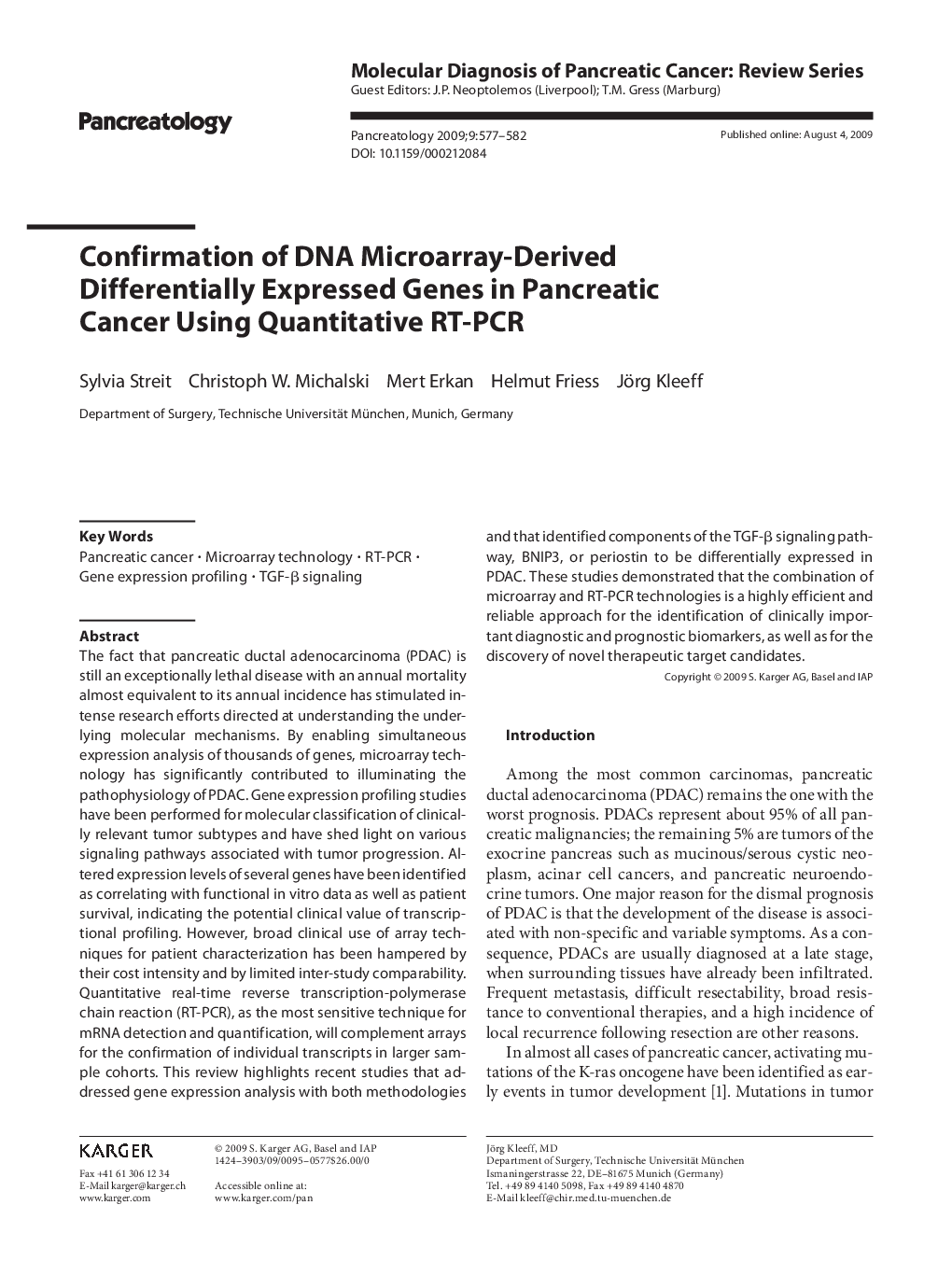| Article ID | Journal | Published Year | Pages | File Type |
|---|---|---|---|---|
| 3318258 | Pancreatology | 2009 | 6 Pages |
Abstract
The fact that pancreatic ductal adenocarcinoma (PDAC) is still an exceptionally lethal disease with an annual mortality almost equivalent to its annual incidence has stimulated intense research efforts directed at understanding the underlying molecular mechanisms. By enabling simultaneous expression analysis of thousands of genes, microarray technology has significantly contributed to illuminating the pathophysiology of PDAC. Gene expression profiling studies have been performed for molecular classification of clinically relevant tumor subtypes and have shed light on various signaling pathways associated with tumor progression. Altered expression levels of several genes have been identified as correlating with functional in vitro data as well as patient survival, indicating the potential clinical value of transcrip-tional profiling. However, broad clinical use of array techniques for patient characterization has been hampered by their cost intensity and by limited inter-study comparability. Quantitative real-time reverse transcription-polymerase chain reaction (RT-PCR), as the most sensitive technique for mRNA detection and quantification, will complement arrays for the confirmation of individual transcripts in larger sample cohorts. This review highlights recent studies that addressed gene expression analysis with both methodologies and that identified components of theTGF-β signaling pathway, BNIP3, or periostin to be differentially expressed in PDAC. These studies demonstrated that the combination of microarray and RT-PCR technologies is a highly efficient and reliable approach for the identification of clinically important diagnostic and prognostic biomarkers, as well as for the discovery of novel therapeutic target candidates.
Related Topics
Health Sciences
Medicine and Dentistry
Gastroenterology
Authors
Sylvia Streit, Christoph W. Michalski, Mert Erkan, Helmut Friess, Jörg Kleeff,
